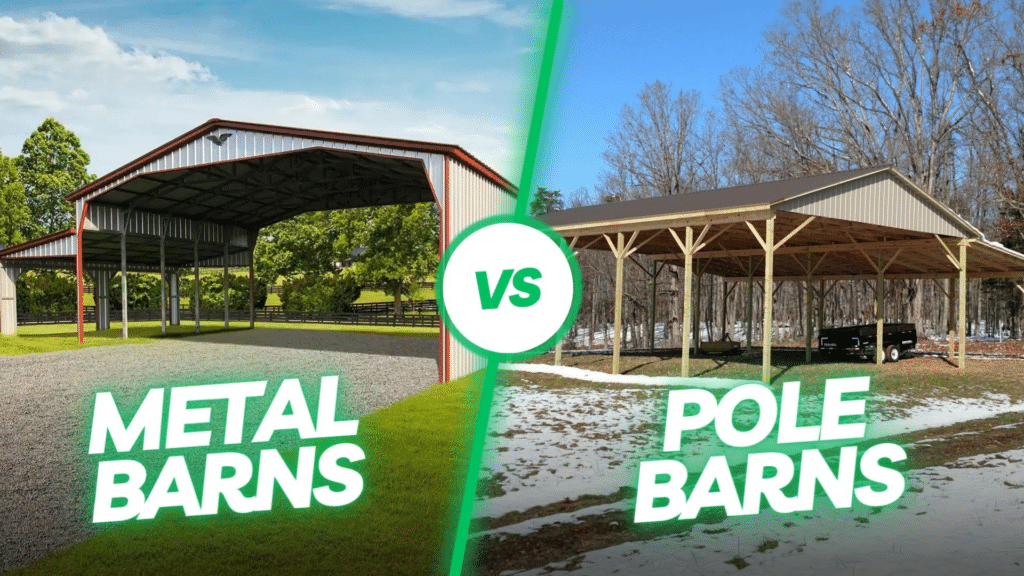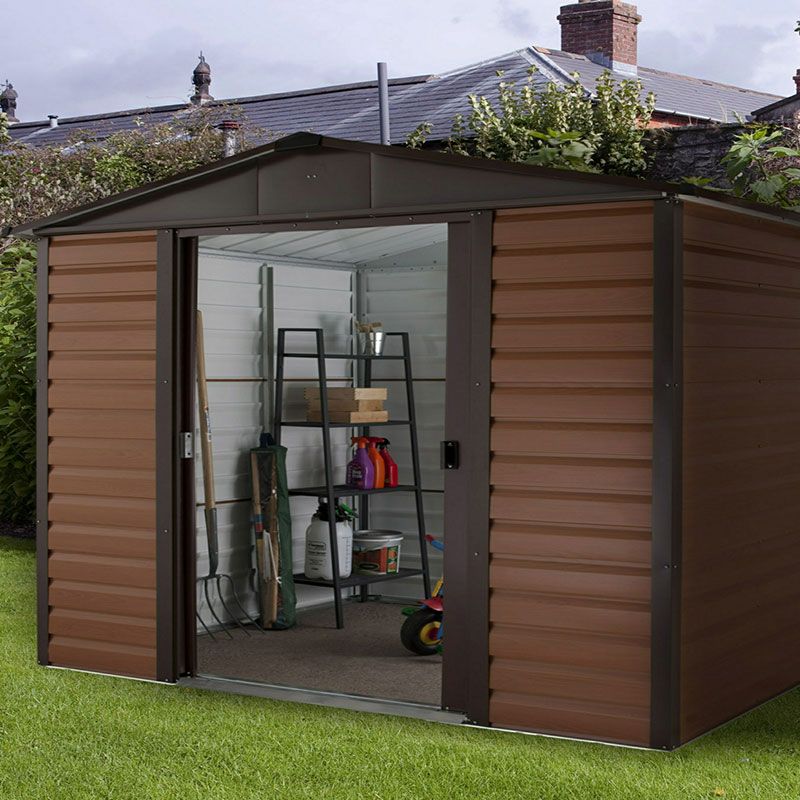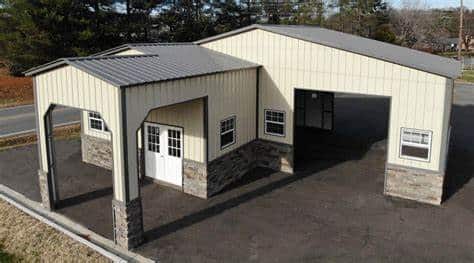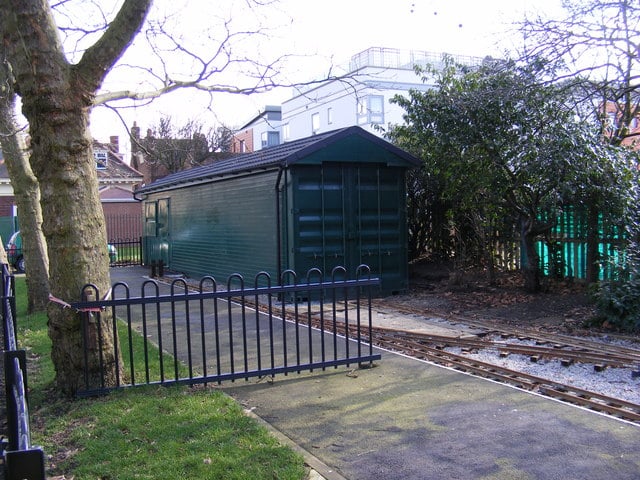The debate is ongoing between metal buildings and pole barns regarding additional storage, workshops, or other outdoor structures. Both steel buildings and metal pole barns have their unique advantages and disadvantages. In this blog post, we will compare metal, barns and steel buildings, and pole barns in terms of cost, durability, customization, and other factors to help you make an informed decision. By the end of this post, you will better understand the pros and cons of each option and which is the better choice for your needs.
I. Introduction
When it comes to selecting the ideal outdoor structure for your property, the debate between metal buildings and pole barns is a topic of great interest. As two popular building types, both steel buildings and pole barns offer unique advantages and disadvantages that can significantly impact your decision-making process. With various factors to consider, such as cost, durability, customization, and construction process, it’s essential to understand the critical differences between metal buildings and pole barns to make the best choice for your specific needs. In this comprehensive blog post, we aim to provide valuable insights, in-depth analysis, and practical guidance on the pros and cons of these two building options, ultimately helping you make the most informed decision for your project.
As you navigate through the world of outdoor structures, the sheer volume of choices can be overwhelming. Metal buildings are known for their versatility, strength, and low maintenance requirements. On the other hand, pole barns primarily consist of wooden poles and framing, offer a more traditional, rustic aesthetic, and can be an affordable option for many property owners. To help you choose the right building type for your needs, this blog post will thoroughly examine and compare the critical aspects of metal buildings and wooden pole barns, discussing their cost, durability, customization options, foundations and flooring, environmental considerations, maintenance and repair requirements, and more.
Throughout this post, we will provide a detailed comparison of metal buildings and pole barns, enabling you to weigh the pros and cons of each option and ultimately choose the one that best aligns with your needs, preferences, and values. By the end of this post, you will better understand the essential factors to consider when deciding between a metal building and a pole barn for your outdoor building project. We will delve into various aspects of these structures, from the materials and construction methods to the overall durability and weather resistance of each type of building. Armed with this knowledge, you can make a more informed decision when selecting the perfect outdoor structure for your property, whether a steel building or a pole barn.
II. Cost Comparison: Metal Buildings vs Pole Barns
Cost is one of the most critical factors when choosing between steel buildings and pole barns. Steel building costs can vary widely depending on factors such as size, design, and location. Steel building kits typically range from $15 to $40 per square foot, with additional costs for features such as insulation and doors. While steel buildings may have a higher upfront cost than pole barns, they often require less maintenance over time, saving money in the long run.
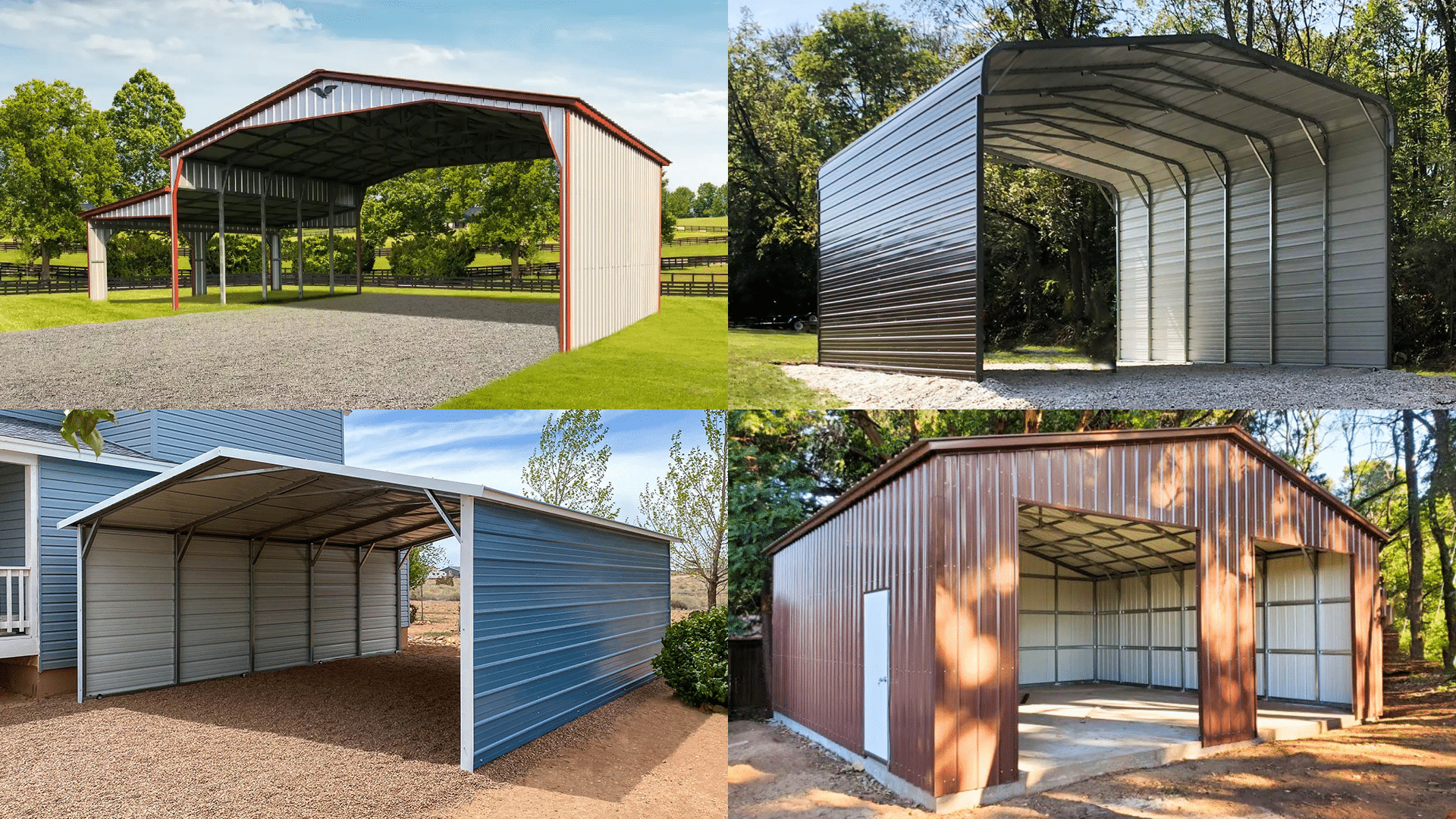
Pole barn costs are often lower than steel buildings, with prices ranging from $10 to $30 per square foot for pole barn kits. However, wooden pole barns may require more maintenance than steel ones, and the lower initial cost of pole building may not always be the most cost-effective option in the long run.
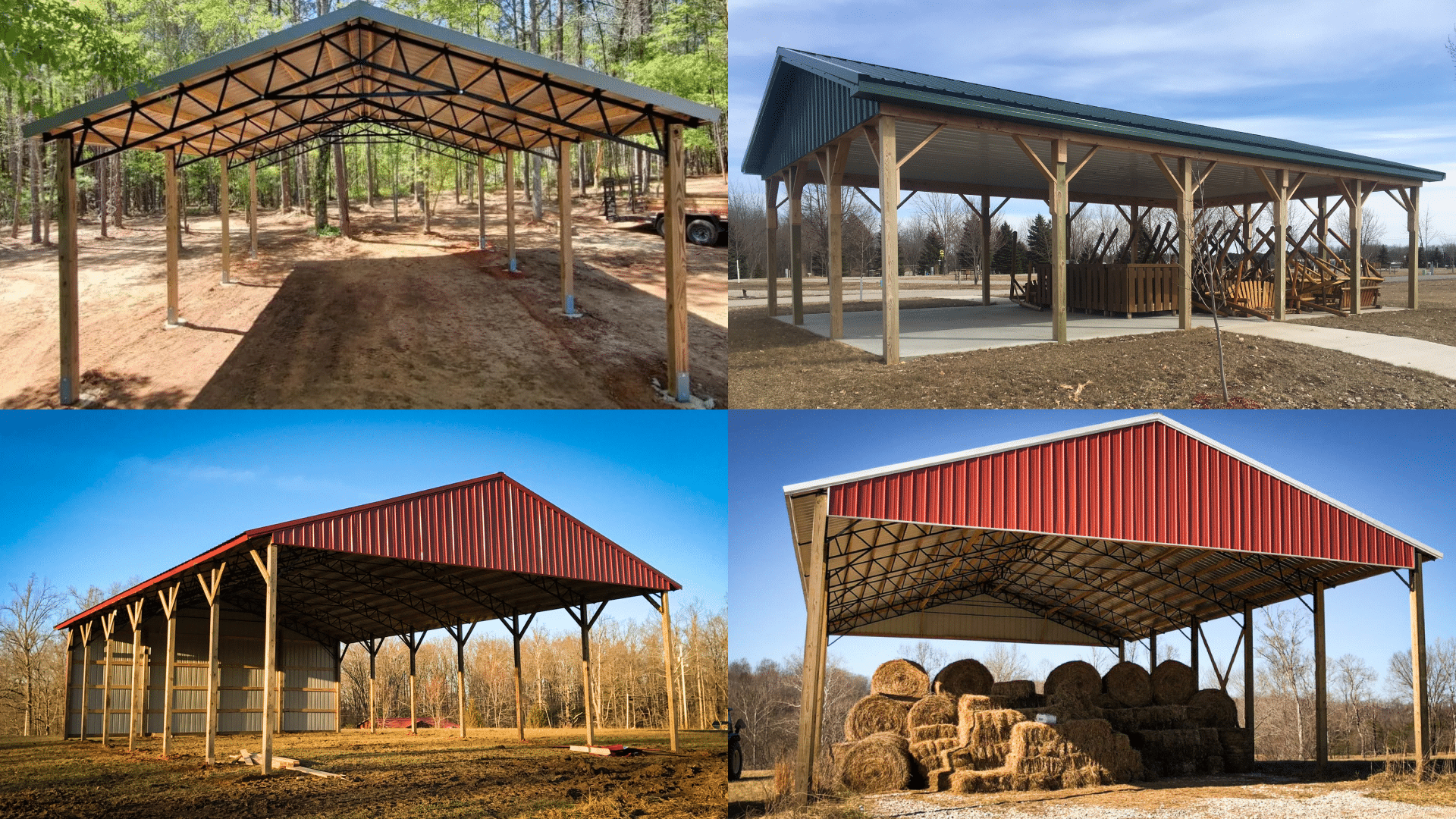
III. Durability: Steel Buildings vs Pole Barns
Durability is another crucial factor when comparing metal buildings and wood pole barns. Steel structures are known for their weather resistance and ability to withstand harsh conditions. High-grade steel, used in quality steel buildings, is resistant to corrosion, warping, and pests. Unlike wood, steel does not suffer from natural deterioration, making high-grade steel for buildings a long-lasting option.
On the other hand, Wooden pole barns can be susceptible to weather damage, natural deterioration, rot, and pest infestation. However, chemically treated wood and weather-resistant materials can increase the durability of pole barns. Steel buildings often have an advantage over wooden pole barns when considering durability and soil conditions.
IV. Customization: Metal Buildings vs Pole Barns
Customization options can be essential when choosing between metal and post-frame buildings and pole barns. Pre-engineered metal building systems offer a high degree of flexibility in design and layout, allowing for unique structures tailored to your needs. Steel construction is versatile and can accommodate various architectural styles and building purposes.
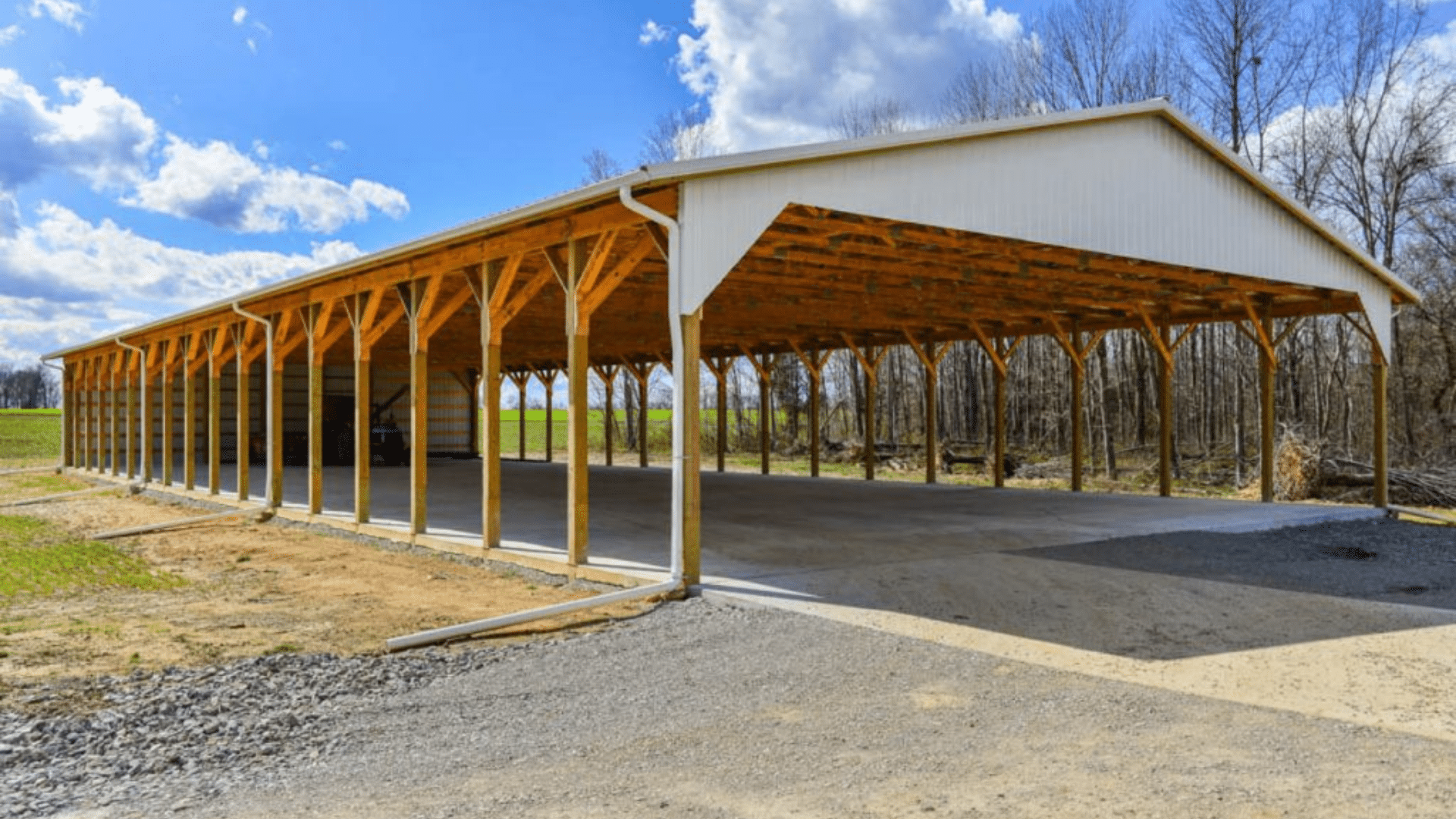
Pole barns also provide a level of customization, with wood framing and wooden structures allowing for unique designs. Roof trusses and rafter beams can be adjusted to create different shapes and layouts in both pole barn vs other-building designs. However, steel buildings often provide more design flexibility and a wider range of options than wood pole barns.
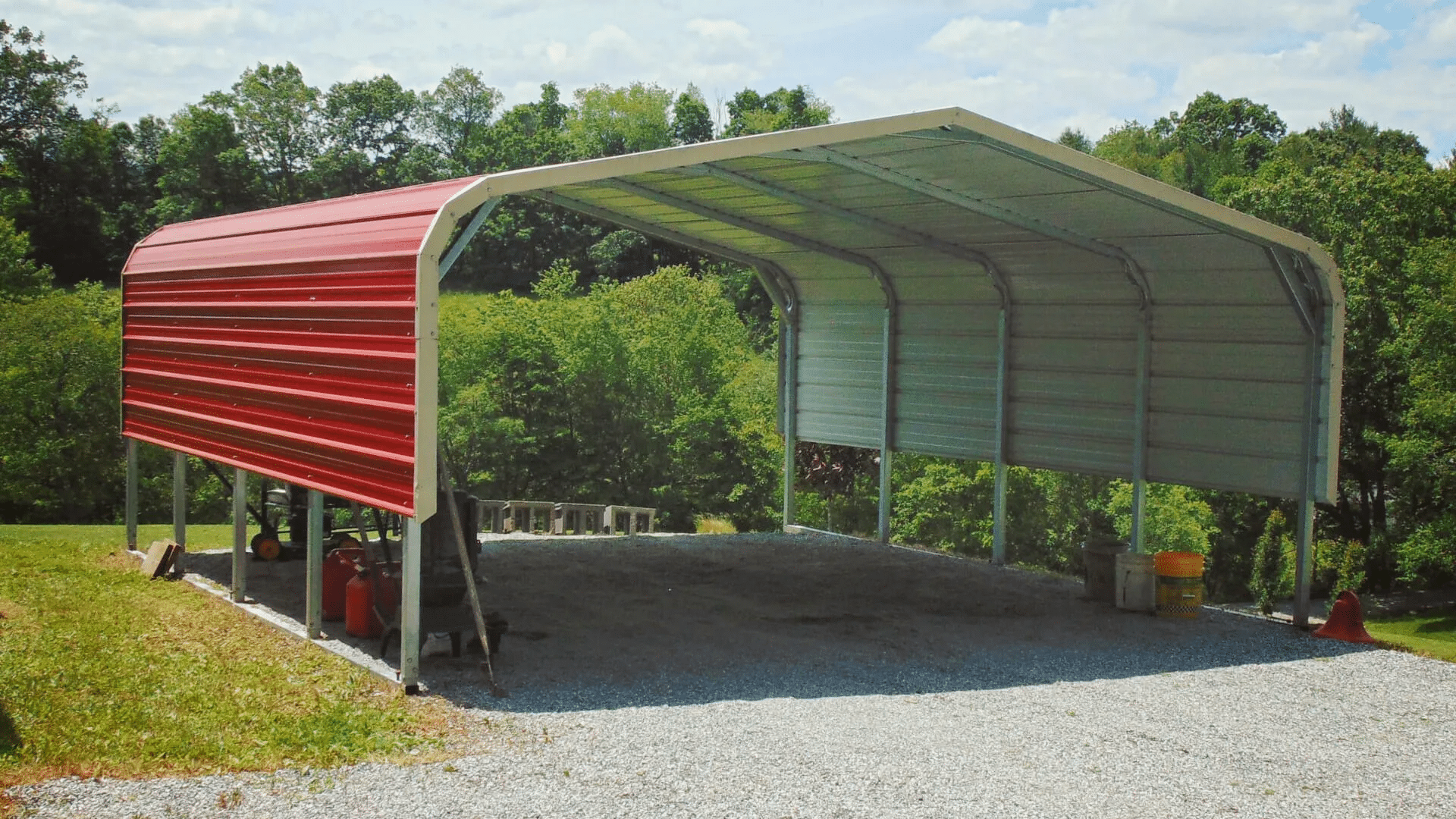
V. Foundations and Flooring: Steel Buildings vs Pole Barns
Proper concrete foundation and concrete floor-ing are essential for any building project. Some steel buildings require a concrete foundation to ensure stability and support the main support structure. Concrete floors are also famous for steel buildings, providing a durable and easy-to-clean surface.
Pole barns rely on wooden poles set in the ground, which can be susceptible to moisture and rot over time. Dirt floors are standard in pole barns, but concrete floors can also be installed for a more durable and easy-to-maintain surface. When comparing foundation and roof types, steel buildings often have an advantage over wood pole barns in terms of durability and longevity.
VI. Uses and Applications: Metal Buildings vs Pole Barns
Both metal barn buildings and pole barns serve various purposes, depending on your needs. Agricultural buildings, such as barns and storage facilities for equipment, are well-suited to both steel buildings and pole barns. Steel barns can house livestock and store equipment, while pole barns can also serve as agricultural buildings, providing animal shelter and storage space.
Workshops and garage spaces can be constructed using either metal buildings or pole barns, with both options providing ample space for tools, vehicles, and equipment. Outdoor structures for recreational or commercial purposes, such as pavilions or covered picnic areas, can also be built using steel or even wood structures.
Choosing metal buildings and pole barns ultimately depends on your specific needs and preferences. Both options can serve various applications, but certain factors, such as other advantages such as durability and weather resistance, may influence your decision.
VII. Construction Process and Local Building Codes
The construction process for steel buildings and pole barns differs, with each requiring unique considerations. Steel building construction involves assembling a pre-engineered metal building system, typically including steel columns, framing materials, and exterior panels. This process can be faster than traditional construction methods, but ensuring that the steel building structure also complies with local building codes is essential.
Pole barn construction involves setting wooden poles in the ground, constructing a wood framing system, and attaching exterior materials to steel building systems such as siding and roofing. This process can be more labor-intensive and time-consuming than steel building construction. As with steel buildings, ensuring that your pole barn adheres to local building codes and regulations is crucial.
VIII. Environmental Considerations: Steel Buildings vs Pole Barns
Sustainability and environmental impact are important factors to consider when choosing between steel buildings and using pole barns and steel. Steel materials are highly recyclable, and steel production is becoming more environmentally friendly as technology advances. However, steel production can still have a significant environmental impact, primarily due to the energy-intensive nature of the process.
Wood materials used in pole barns are renewable and biodegradable, making them an appealing choice from an environmental standpoint. However, harvesting and producing wood and other materials can also have environmental consequences, such as deforestation and habitat destruction.
When comparing the environmental considerations and additional advantages of steel buildings and pole barns, weigh each option’s benefits and drawbacks and consider which aligns with your values and priorities.
IX. Maintenance and Repair: Metal Buildings vs Pole Barns
Maintenance and repair requirements differ for metal buildings and wooden pole barns. Steel buildings typically require less maintenance than wooden pole barns, as they resist rot, pests, and warping. Steel buildings may require periodic inspections and maintenance to ensure the steel structure remains in good condition.
On the other hand, wooden pole barns may require more frequent maintenance, such as painting or staining, to protect the wood from the elements. Repairs and replacements of metal barns also have regular maintenance that may be necessary if the wood deteriorates or becomes damaged over time.
In terms of low maintenance and repair costs, steel buildings often have an advantage over wooden poles, barns, and steel buildings due to their durability and resistance to natural elements.
X. Conclusion
In conclusion, the choice between metal buildings and pole barns depends on your specific needs, preferences, and priorities. Key differences between these two options include cost, durability, customization, foundation and flooring, and environmental considerations. By weighing the pros and cons of steel buildings and pole barns, you can make an informed decision that best suits your needs and preferences.
Whether you choose a steel building or a pole barn for your project, it is essential to carefully consider all aspects of the building process, from design and construction to maintenance and environmental impact. By doing so, you can ensure that your new structure will
serve you well for years to come. Both metal buildings and pole barns have their unique advantages, and understanding these differences is crucial to making the best choice for your needs.
Ultimately, steel buildings offer greater durability, weather resistance, and design flexibility, while pole barns provide a more cost-effective solution with a rustic, traditional aesthetic. Your decision will be influenced by factors such as your budget, intended use, location, and personal preferences and values.
By comparing metal buildings vs steel and pole barns vs pole barns in terms of cost, durability, customization, construction process, and environmental considerations, you can make a more informed decision and select the building option that best aligns with your needs and priorities. With careful planning and consideration, your new building – be it a metal building or a pole barn – will provide the functionality, durability, and aesthetic appeal you desire for your project.

